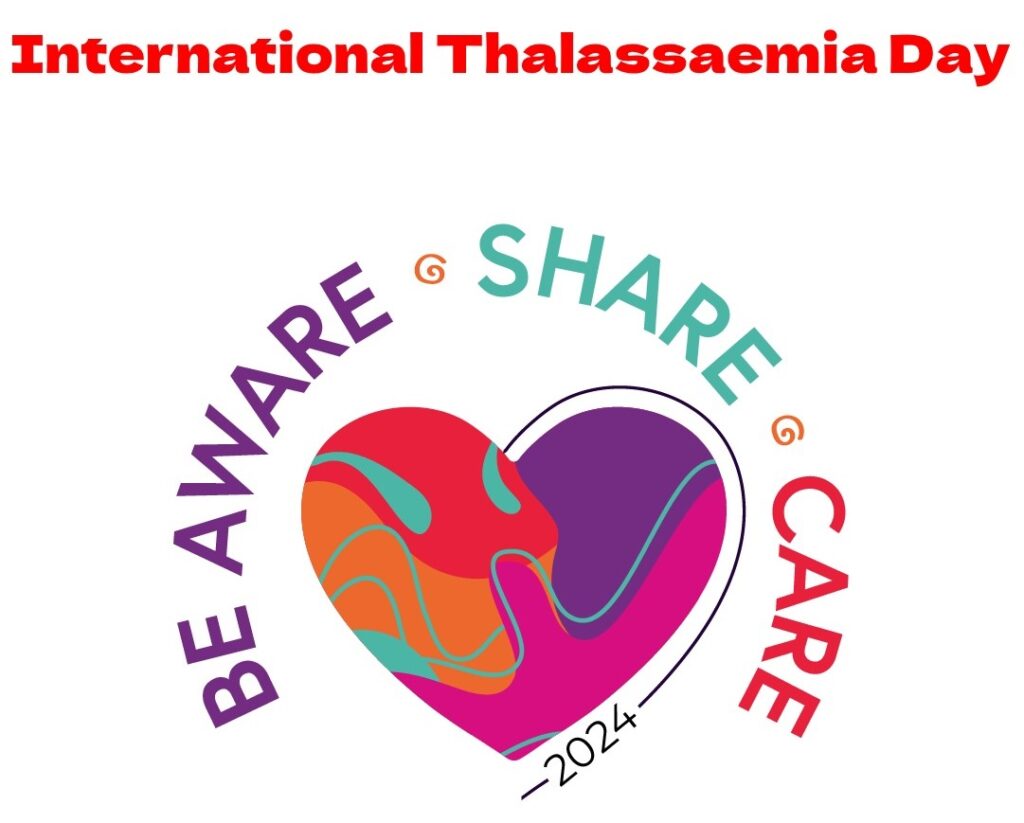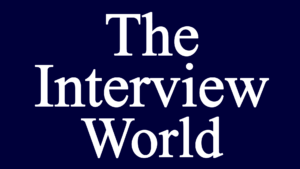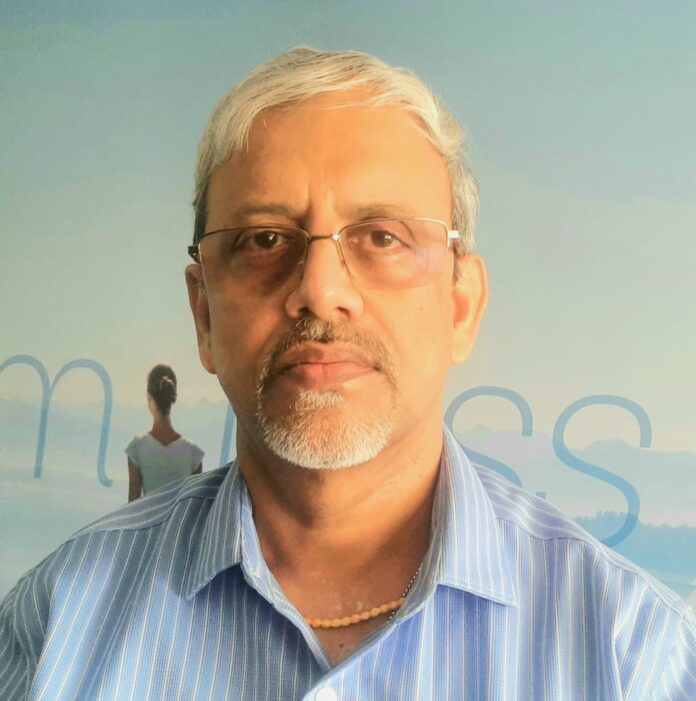Today, on May 8, 2024, we commemorate International Thalassaemia Day, a day dedicated to raising awareness and promoting solidarity within the global community affected by thalassaemia. This year, the theme, “Empowering Lives, Embracing Progress: Equitable and Accessible Thalassaemia Treatment for All,” resonates deeply as we strive for inclusive and accessible care for every individual impacted by this condition.
With approximately 100 million people worldwide carrying thalassaemia genes and over 300,000 babies born each year with severe forms of the disease, the importance of this day cannot be overstated. It serves as a reminder of the challenges faced by those living with thalassaemia and the collective responsibility to ensure their well-being.
In 2024, our commitment is clear: to guarantee that every person affected by thalassaemia, regardless of their geographical location or socioeconomic status, has access to timely diagnosis, effective treatments, and comprehensive care.
As part of our observance of International Thalassaemia Day, The Interview World is honored to engage in a conversation with Dr. Suparno Chakrabarti, Head of the Department for Blood and Marrow Transplantation and Hematology at Dharamshila Narayana Hospital and Research Centre. Through this dialogue, we aim to shed light on various aspects of thalassaemia and share valuable insights with a wider audience, contributing to greater understanding and support for those affected by this condition. Below are excerpts from our enlightening discussion with Dr. Chakrabarti.
Q: What are the different types of thalassaemia and how do they differ in terms of symptoms and severity?
A: Indeed, thalassaemia presents two primary types: alpha thalassaemia and beta thalassaemia. Alpha thalassaemia is relatively rare in this region, whereas beta thalassaemia constitutes the more prevalent variant.
Beta thalassaemia, therefore, is our focus here. This condition arises due to genetic mutations affecting the globulin protein responsible for binding heme. Specifically, when these mutations occur, the production of globulin chains diminishes, rendering them unable to effectively bind heme molecules.
Consequently, when both parents carry the thalassaemia gene and the child inherits two defective globulin chains, the result is a catastrophic breakdown of the system. Red blood cells, formed under these circumstances, lack the necessary attributes for survival within the human circulatory system. Consequently, they face destruction within the bone marrow or, if they escape, within the spleen.
These defective red blood cells stem from an imbalance in globulin chains, leading to what we term beta thalassaemia. Conversely, if this imbalance pertains to alpha chains, the condition is labeled alpha thalassaemia.
Now, let’s delineate the various manifestations of thalassaemia. Broadly, we categorize thalassaemia into three types. Firstly, there’s the thalassaemia trait, wherein an individual merely carries the gene. Detecting this condition is remarkably straightforward; a simple blood test suffices. Certain red cell abnormalities emerge, reflecting the loss of one arm of the “chair” structure of hemoglobin.
Despite this, individuals with thalassaemia traits lead normal lives without any significant impact on their health or lifestyle. However, a specialized test, hemoglobin electrophoresis, confirms the presence of elevated hemoglobin A2 levels, indicative of beta thalassaemia trait.
When both parents transmit the genes to their offspring, the disease manifests more severely. By six months of age, the child struggles to produce functional red cells, precipitating severe anemia. Left untreated, this anemia prompts compensatory mechanisms, resulting in the expansion of bone marrow and physical deformities.
This severe manifestation, known as thalassaemia major, represents the most critical form of the condition. Conversely, thalassaemia intermedia occupies an intermediate position. Here, the impairment of globin chains is less severe, potentially obviating the need for transfusions at birth.
However, as the child grows, symptoms gradually emerge, with facial deformities typically appearing by the age of two or three. Early detection is crucial to prevent skeletal deformities, as delay often results in irreversible physical alterations.
In summary, thalassaemia encompasses these three primary forms, each varying in severity and treatment requirements.
Q: What are the most suitable treatment options available for thalassaemia?
A: To sustain life, the child requires blood transfusion. Initially, the blood transfusion is administered every 4-6 weeks, providing the necessary support. Maintaining hemoglobin levels between 9-12 grams percent is crucial for the child’s normal growth.
However, with successive transfusions, excess iron accumulates in the body from the red cells, leading to complications. The bone marrow, instead of utilizing the iron to form healthy red cells, produces defective ones in abundance. Consequently, the excess iron circulates, depositing in vital organs like the liver, brain, and heart, causing severe dysfunction.
Addressing this issue, we must take measures to eliminate excess iron from the body. Previously, daily injections were necessary for iron removal. Now, iron chelation tablets are available, which the child must take once iron accumulation begins. These tablets become a lifelong necessity during transfusion therapy for thalassaemia major.
In thalassaemia intermediate, treatment focuses on maintaining adequate hemoglobin levels to prevent skeletal and bone deformities. This constitutes the fundamental care regimen for thalassaemia management.
Regarding a cure, bone marrow transplantation stands as the only viable option. Although a high-risk procedure, successful transplantation results in thalassaemia cure for 9 out of 10 children. However, inherent risks include potential complications and rejection of the donor marrow, leading to treatment failure.
Yet, the presence of a matched family donor significantly increases the chance of a successful transplantation to 90%.
Q: Are there any experimental treatment options on the horizon for thalassaemia and what are the potential benefits of that?
A: Thalassaemia, a hereditary blood disorder characterized by abnormal hemoglobin production, poses a formidable challenge in the realm of pediatric medicine. As medical science strides forward, the quest for effective treatments intensifies, pivoting towards innovative approaches to alleviate the burdens borne by affected individuals and their families.
Among these pioneering methodologies, bone marrow transplantation emerges as a cornerstone, offering a glimmer of hope to those grappling with the relentless demands of thalassaemia. However, the success of this procedure hinges upon the elusive quest for a fully matched human leukocyte antigen (HLA) donor within the familial realm. HLA, a genetic signature inherited from parents, underscores the intricacies of donor-patient compatibility, amplifying the significance of finding a sibling who shares a complete match—an endeavor fraught with uncertainty, as the odds stand at a modest 25%.
Yet, for the vast majority of thalassaemia-afflicted children, the prospect of securing such a familial lifeline remains a distant dream, further compounded by the prevalence of single-child households. Unlike their counterparts in the Western hemisphere, where expansive donor registries offer a ray of hope through unrelated matches, those navigating the labyrinth of thalassaemia treatment in India grapple with the stark reality of scarcity in this crucial domain.
Consequently, out of the staggering multitude of children ensnared by the clutches of thalassaemia across the nation, only a scant fraction may find solace in the form of either a familial or unrelated donor, leaving the vast majority bereft of recourse. It is within this harrowing landscape that the beacon of hope shines forth—a beacon that has guided the efforts of medical practitioners and researchers alike for the past decade.
Enter haploidentical transplantation—a paradigm-shifting approach that harnesses the power of partial HLA matches within the familial sphere. Despite initial skepticism surrounding the viability of utilizing partially matched donors, a deeper understanding of the intricate dynamics of familial bonds has unveiled a hidden reservoir of biological tolerance, an invaluable asset in the realm of transplantation.
Indeed, the bonds forged within the crucible of kinship lay the foundation for a remarkable journey—a journey marked by the convergence of science and compassion, where the seemingly insurmountable barriers of genetic disparity are transcended by the innate resilience of the human spirit. Over the years, this journey has witnessed the transformation of skepticism into conviction, as the halls of medical science resound with the echoes of over forty successful cases—a testament to the unwavering resolve of those committed to the cause.
Yet, amidst the triumphs and tribulations that punctuate this odyssey, one truth remains self-evident: timing is of the essence. The window of opportunity, once open wide in the infancy of life, gradually narrows with the passage of time, rendering intervention beyond childhood a perilous gambit. Indeed, the specter of complications looms large as the tendrils of iron deposition entwine themselves around the delicate fabric of the liver, while the rhythmic cadence of the heart falters under the weight of cardiovascular strain.
In tandem with transplantation, gene therapy emerges as a beacon of hope—a revolutionary frontier poised to redefine the contours of thalassaemia treatment. By rectifying the underlying genetic anomalies that underpin the disorder, this autologous approach holds the promise of liberation—a promise that beckons to those ensnared in the relentless cycle of transfusions and treatments.
However, amidst the euphoria that accompanies each breakthrough, a sobering reality lurks in the shadows—the formidable specter of cost. In a world where access to healthcare remains a privilege rather than a right, the exorbitant price tag associated with gene therapy threatens to consign it to the realm of unattainable dreams for the countless souls yearning for reprieve.
Moreover, lurking beneath the surface of optimism lies the ever-present specter of uncertainty—a shadow that casts a pall over even the most promising of prospects. As the sands of time trickle through the hourglass of human existence, the possibility of unforeseen malignancies emerging from the depths of genetic manipulation looms as a chilling reminder of the fragility of human endeavor.
In conclusion, while the horizon of thalassaemia treatment shimmers with the promise of transformation, the path forward is fraught with challenges—challenges that demand unwavering resolve, unyielding compassion, and unshakeable faith in the indomitable spirit of humanity. As we navigate the labyrinthine corridors of medical science, let us heed the clarion call to action, marching ever forward in pursuit of a brighter tomorrow—a tomorrow where we can cast aside the shackles of thalassaemia, and promise a better health and healing.
Q: How do you approach genetic counselling for individuals with thalassaemia or others at risk of carrying the gene?
A: Genetic counseling serves as a vital cornerstone in the realm of family planning, emphasizing the imperative for prospective parents to grasp the potential ramifications of conceiving a child afflicted by thalassaemia major. This hereditary blood disorder poses significant challenges, particularly when both parents carry the gene responsible for thalassaemia or other hemoglobin disorders. In such cases, there exists a substantial 25% likelihood of the offspring being born with major thalassaemia, a condition characterized by severe anemia and the need for lifelong medical management.
To navigate this complex landscape of genetic risk, couples are presented with various avenues for mitigation. Among these options is the possibility of abstaining from childbearing or marriage if both partners are carriers of the thalassaemia gene. However, such decisions are not without ethical and personal implications, as they entail significant sacrifices and may encroach upon individual freedoms and rights. Consequently, while this approach offers a potential solution, it is often regarded as extreme and not readily embraced by all.
In contrast, a more pragmatic strategy involves proactive engagement with the available resources and technologies in genetic screening and counseling. By availing themselves of prenatal screening services, prospective parents can ascertain whether their unborn child carries the genetic predisposition for thalassaemia. This early detection empowers them with crucial information to make informed decisions about the continuation of the pregnancy.
Yet, even with the knowledge gleaned from genetic testing, the path forward remains fraught with uncertainty and ethical dilemmas. The decision to proceed with the pregnancy or consider alternative options rests within a nuanced gray area, influenced by myriad factors such as personal beliefs, cultural norms, and familial dynamics. Consequently, individuals must navigate this terrain with sensitivity and support, drawing upon the guidance of healthcare professionals and counselors trained in the complexities of genetic counseling.
In essence, genetic counseling offers a multifaceted approach to addressing the challenges posed by thalassaemia and other hereditary conditions, emphasizing the importance of early detection, informed decision-making, and compassionate support throughout the journey of family planning.
Q: What lifestyle modifications are required to deal with this problem?
A: Thalassaemia presents a genetic challenge impervious to lifestyle modifications. Despite this, children diagnosed with thalassaemia are encouraged to lead lives as typical as possible, with the aid of essential medical interventions such as transfusions, chelation therapy, or in some cases, bone marrow transplants. These treatments offer avenues to mitigate the impact of the condition, enabling children to partake in everyday activities alongside their peers.
However, the regimen of transfusions and chelation therapy can introduce hurdles in the form of fatigue and weakness, typically experienced in the period preceding each transfusion. This cyclical pattern can disrupt routines and necessitate adjustments in daily activities. While dietary modifications, such as reducing iron intake, are sometimes recommended to complement treatment, their significance diminishes when comprehensive transfusion and chelation protocols are in place. In essence, the emphasis shifts from dietary restrictions to ensuring the efficacy of medical interventions.
Hence, the overarching advice remains consistent: prioritize facilitating as normal a life as possible for children grappling with thalassaemia. This entails not only addressing medical needs but also fostering an environment conducive to their overall well-being and integration within their social spheres.



